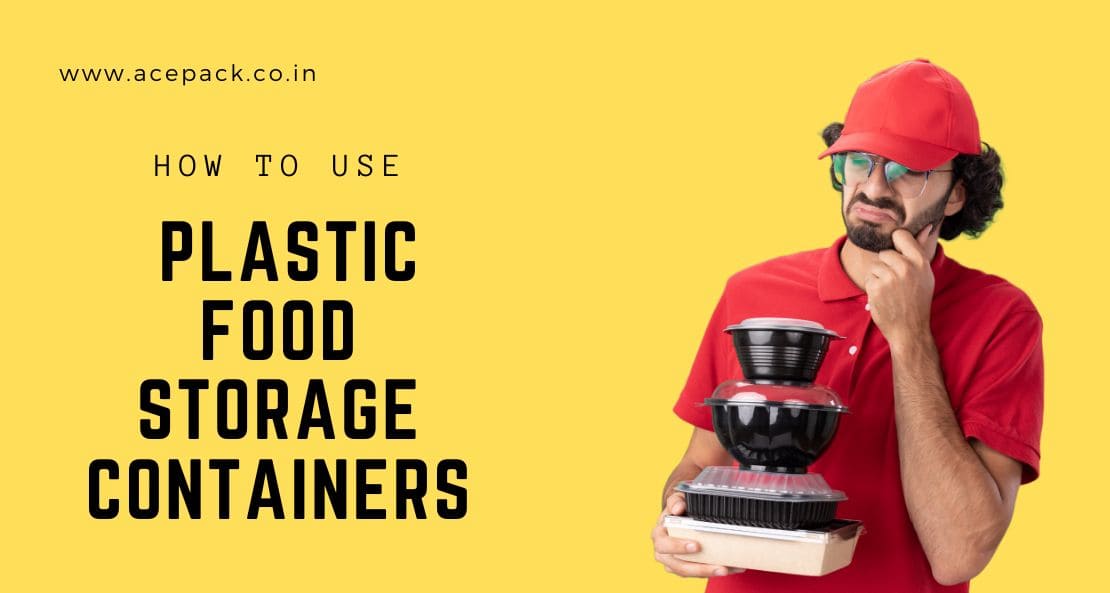Plastic storage containers have become a staple in modern kitchens. Their versatility, convenience, and affordability make them a go-to solution for storing leftovers, prepping meals, and transporting snacks. But with so many containers lining the shelves, are you using them to their full potential?
This guide dives deep into food storage containers, equipping you with the knowledge to maximize their effectiveness while ensuring food safety. From choosing the right container to mastering safe storage practices, we'll turn you into a container connoisseur!
The Power of Plastic: Convenience at Your Fingertips
Let's face it, juggling a busy lifestyle often leaves little time for elaborate meal prep. Food storage containers come to the rescue, offering a simple and effective way to manage your food. Here's how plastic storage containers for kitchen enhance your cooking experience:
- Portion Control: Pre-portioning meals and snacks in containers helps with mindful eating and reduces the risk of overindulging.
- Leftover Lifesavers: Don't let those delicious leftovers go to waste! Store them in containers for quick and easy lunches or dinners.
- Meal Prep Magic: Prep ingredients or entire meals in advance and store them in containers for a stress-free week.
- Transporting Treats: Pack lunches, snacks, or homemade treats for work, school, or picnics with ease.
- Fridge and Freezer Organization: Organize your refrigerator and freezer by storing different foods in labeled containers, maximizing space and preventing clutter.
Choosing Your Champions: Selecting the Perfect Containers
Not all plastic containers are created equal. Here are some key factors to consider when selecting the perfect warriors for your kitchen battles:
- Food-Grade Matters: Look for the "food-grade" label. This signifies the plastic is safe for storing food and won't leach harmful chemicals.
- Size Matters: Choose containers in various sizes and shapes to accommodate different needs. Round containers might be ideal for soups and sauces, while rectangular ones work well for lasagna or cut vegetables.
- The Lid Lowdown: Consider both airtight and loose-fitting lids. Airtight lids are perfect for dry goods, leftovers, and foods prone to absorbing odors, while loose-fitting lids are better for fruits and vegetables that require some air circulation.
- Recycling Savvy: Understanding recycling codes on the bottom of containers can help you dispose of them responsibly. Check the guide from the Environmental Protection Agency to learn what each number signifies.
Safe Storage: Keeping Your Food Fresh and Protected
While plastic containers offer convenience, proper storage practices are crucial for maintaining food quality and safety. Here's what you need to know:
- Plastic Proficiency: Not all plastics are suitable for all foods. Dry goods like pasta, grains, and cereals fare well in plastic containers. However, oily or acidic foods like salad dressings and tomatoes can break down the plastic over time, potentially affecting taste and safety. Consider glass or stainless steel for these types of food.
- Labeling and Dating: Labeling your containers with the contents and date can significantly reduce food waste. You'll easily identify what's inside and avoid that mystery container lurking in the back of the fridge.
- Temperature Talk:
- Microwave Safety: Always check for the microwave-safe symbol on the container before reheating food. Using non-microwave-safe containers can cause warping or leaching of chemicals.
- Freezing: Ensure the container is rated for freezing temperatures. Freezing can cause some plastics to become brittle and crack.
- Reusing Responsibly: Inspect your containers regularly for cracks, stains, or warping. Discard any damaged containers to prevent potential contamination.
Cleaning and Maintaining Your Container Army
Keeping your food storage containers clean and well-maintained is essential. Here are some tips for optimal hygiene:
- Washing Wisely: Check the label to see if the container is dishwasher safe. For handwashing, use warm soapy water and a gentle sponge. Don't forget to clean the lids, paying attention to any crevices where food can get trapped.
- Stain and Odor Fighters: For stubborn stains or lingering odors, try baking soda or white vinegar mixed with water. Let the container soak for a while before washing thoroughly.
- Proper Storage: When not in use, store your plastic containers with the lids open to allow for air circulation and prevent musty odors.
Eco-Friendly Alternatives: Exploring Beyond Plastic
While plastic containers offer undeniable benefits, some individuals might prefer a more eco-friendly approach. Here are some alternatives to consider:
- Glass Containers: Glass is a sustainable and non-porous material, perfect for storing a variety of foods without the risk of leaching chemicals.
- Stainless Steel Containers: Durable and long-lasting, stainless steel containers are ideal for storing leftovers, transporting lunches, or packing snacks. They're also freezer-safe and won't stain or absorb odors. However, they can be heavier than plastic and may not be microwave-safe.
Conclusion
Plastic storage containers, when used strategically and with proper care, can become a valuable asset in your kitchen. By choosing the right containers, employing safe storage practices, and maintaining them properly, you'll extend the shelf life of your food, minimize waste, and enjoy the convenience they offer. Remember, mindful use of plastic containers can contribute to a more organized and efficient kitchen experience.
